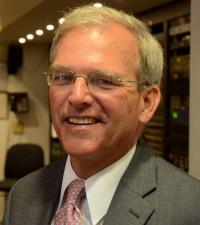March 24, 2021

Boston ranks in the top ten cities in the United States when it comes to income inequity. The most cited example is the 2015 Federal Reserve Bank study of assets by race that showed white Bostonian households had a median net worth of $247,500 while the median net worth for Black Bostonian households amounted to $8. Addressing this very real wealth gap will be a central campaign issue in this year’s race for mayor.
At the beginning of the first Walsh administration (FY 2014) the city’s annual budget was $2.6 billion. As Walsh leaves office near the end of his second term (FY21), the budget number is $3.6 billion, an increase of 38 percent from 2014, a period during which inflation was 11 percent.
New construction in the city’s building boom has dramatically increased the annual tax levy. In 1980, Massachusetts voters passed an initiative petition, colloquially called “Proposition 2½,” limiting increases in municipal property tax levies to 2.5 percent per year, unless citizens voted for an override to increase taxes beyond that number. Boston has never asked voters for an override. Over the eight fiscal years of the Walsh administration to FY21, the 2.5 percent allowance for an increase added a total of $411.5 million to the city budget.
Proposition 2½, however, allows additional property tax revenue to be generated from growth, which is mostly made up of new construction. During the Walsh administration, the building boom had added $578.4 million in new property taxes to the city budget by FY21. Added up, the two increases in the property tax levy grew the city budget by some $1 billion over the course of Walsh’s terms.
What were these additional dollars used for? The bulk of the $1 billion – $632,000,000 – went to personnel, mainly for salary increases and the addition of 903 employees. The department with the largest increase in staff was the Boston Public Schools, with 864 more personnel than in FY14, a surprising increase as the number of students decreased from 57,000 to 52,000 between FY14 and FY21.
During Walsh’s tenure, many plans were drawn up to address major problems the city is facing, including Imagine 2030, a strategic plan for Boston; Build BPS, a plan that included building or rebuilding 12 schools by 2027; the Boston Climate Action Plan, which created a plan to reduce emissions by 100 percent by 2050; the Open Space and Recreation Plan 2015-21; and Boston Housing 2030, which calls for 69,000 new units of housing.
The Walsh team chose to invest a large portion of the additional dollars provided by new construction to personnel, leaving much of the implementation of the aforementioned plans to the new administration, should it decide to adopt these plans.
Still, inequities persist.
We now have another opportunity to address that problem through President Biden’s $1.9 trillion Covid relief plan. Like the $2.25 billion in construction growth dollars, the Biden money could be viewed as extra funding to be used for many different purposes.
Boston will be receiving $434.6 million for city operations and $275.6 for schools on top of the $123 million in federal aid received for schools last December. Interest groups are lining up to lobby how the money should be used.
The building boom may or may not continue, but in any event it probably will not be as robust as in the past eight years. As a result, the Covid relief dollars may offer one of our few opportunities to use unexpected dollars to change in a transformative way how Boston deals with its deep problem of racial inequities.
My suggestion is to create universal K-1 and K-0 grades in the Boston Public Schools. I wrote in a recent column why 1,500 new seats for K-1 would guarantee every four-year-old a seat in K-1.
K-0, a grade for three-year-olds, would be transformative in several ways. Research shows it greatly increases success in kids’ subsequent educations. Some 66 percent of Boston’s children ages 0-5 are of color, and three quarters of students in BPS qualify for free or reduced lunch, according to City Hall data. Relieving parents of the expenditure for day care would significantly increase their incomes.
Since BPS’s enrollment continues to drop, inviting Boston parents to enroll their three-year-olds in a high quality public school program would increase the likelihood that they would continue their children’s schooling in the BPS.
It is likely that we would need 3,000-4,000 K-0 seats, which would boost enrollment in BPS, though by fewer than the total number of lost students over the past eight years.
The City of Boston should also use this change of administration to audit its budget. Much of Boston’s budgets are based on last year’s allotment plus raises rather than from a hard look at what is important and needed from city government, and what can be changed to accommodate what we want to do now and in the future.
For example, we know that the overtime budget for the Boston Police Department is already overspent and that requiring police details anytime a street permit is pulled is both expensive and unnecessary.
We know that fire department pull boxes are unnecessary but cost millions to maintain. Additionally, studies have shown that the Boston Fire Department is the most expensive among 30 major cities in the US because it is overstaffed. This creates the weird and unnecessary situation of having both the Fire Department and EMS respond to the same accidents and incidents.
An audit of Boston’s functions and budget against best practices would be elucidating and may offer opportunities to reallocate dollars to our city’s current and future priorities and needs. Rather than continue the status quo, let’s use this transition to implement a new vision for Boston, one that uses its resources to achieve equity.
Bill Walczak is a Dorchester resident and former CEO of the Codman Square Health Center. He was a candidate for mayor of Boston in 2013.


